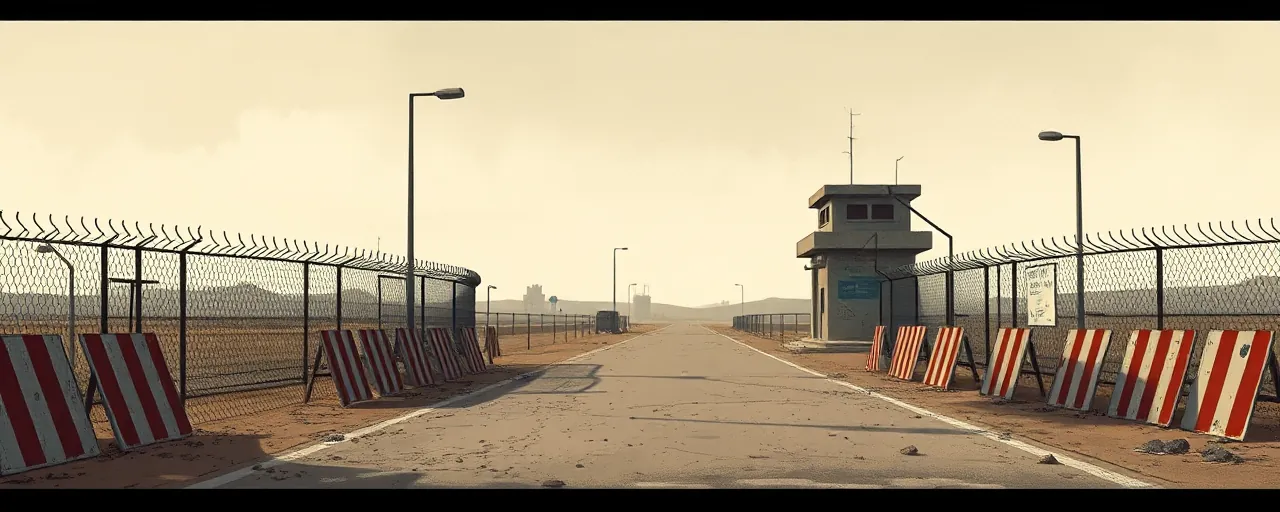A Bold Strike Against Tehran’s War Machine
The United States just dropped a hammer on Iran’s relentless pursuit of chaos. On April 1, 2025, the State Department announced sanctions targeting six entities and two individuals across Iran, the UAE, and China, all caught red-handed funneling critical components to Tehran’s UAV and ballistic missile programs. This isn’t some half-hearted gesture; it’s a calculated gut punch to Iran’s military-industrial complex, specifically zeroing in on Qods Aviation Industries, a linchpin in the regime’s drone proliferation. Under President Trump’s maximum pressure campaign, these measures signal that America won’t sit idly by while Iran arms its proxies and fuels global instability.
Let’s be real: Iran’s drones and missiles aren’t just toys for parades. They’re tools of terror, exported to Russia for its war in Ukraine, handed to Hezbollah and the Houthis to menace Israel and Saudi Arabia, and wielded to threaten anyone who dares defy Tehran’s ambitions. The Biden years let this fester, but now we’re seeing a return to backbone. These sanctions aren’t about diplomacy; they’re about choking off the supply lines that keep Iran’s war machine humming. And if you think this is overreach, ask yourself: how many more Houthi drone strikes on Saudi oil fields or Russian barrages in Kyiv do we tolerate before enough is enough?
The Evidence Stacks Up—Iran’s Reach Grows
Look at the facts. Iran’s UAV program has churned out nightmares like the Ababil-5 and Arash-2—cheap, deadly, and capable of slipping past defenses. These aren’t backyard projects; they’re battle-tested weapons Tehran hands out like candy to its terrorist buddies. Houthi rebels have launched hundreds of Iranian-supplied drones at Saudi infrastructure, crippling oil facilities and proving Tehran’s reach. Meanwhile, Russia’s churning out Shahed UAVs from a factory in Tatarstan, built with Iran’s help, to pound Ukraine. This isn’t speculation; it’s reality, backed by hard data from the Treasury and State Departments.
Historical precedent screams the same warning. Back in the 1980s, Iran leaned on China to jumpstart its missile game, snagging tech that fueled decades of proliferation. Sanctions slowed them, sure, but never stopped them. Tehran’s learned to dodge, weaving webs through the UAE and China to snatch dual-use tech despite Executive Order 13382. That order’s been a solid tool since 2005, freezing assets and nailing proliferators, but Iran’s slippery. They rebrand, they smuggle, they adapt. Today’s sanctions hit four UAE outfits and Chinese firms square in the chest, proving we’re onto their game.
Why Half-Measures Fail—and Strength Wins
Some bleeding hearts argue sanctions hurt more than they help, claiming they push Iran to double down. Nonsense. Iran’s been doubling down since the Ayatollahs took over, turning oil cash and arms sales into a $2.3 billion war chest for the IRGC. They don’t negotiate in good faith; they exploit weakness. Look at the Iran-Iraq War—cut off from the world, they built a self-sufficient weapons industry that’s now a global menace. Sanctions disrupt that, even if not perfectly. The Treasury’s latest move under EO 13382 proves it: cut the cash, cripple the capability.
Tehran’s not just a regional bully; it’s a global threat. Its Khorramshahr-4 missile can hit 2,000 kilometers—enough to menace half the Middle East. Pair that with drones flooding proxy hands, and you’ve got a recipe for chaos no amount of hand-wringing diplomacy fixes. The UAE and China keep playing middlemen because they know soft policies let them off the hook. America’s new sanctions call their bluff, forcing accountability. Anything less, and we’re just kicking the can down a road lined with Iranian bombs.
The Stakes Are Real—Time to Finish the Job
This isn’t abstract policy wonkery; it’s about your gas prices, your safety, your world. Iran’s drones and missiles jack up oil costs when they hit Saudi fields, embolden Russia in Europe, and arm terrorists who’d love to see America humbled. The State Department’s action is a start, but it’s not the endgame. We need relentless pressure—more designations, tighter enforcement, and a clear message to Tehran’s enablers in Dubai and Beijing: you’re next if you don’t cut it out. Iran’s military-industrial base thrives on cash from arms sales; starve it, and the whole house of cards wobbles.
America’s back in the driver’s seat, and it’s about time. The Middle East won’t stabilize, Russia won’t back off, and proxies won’t disarm until Iran’s war machine grinds to a halt. These sanctions are a shot across the bow, a promise kept to taxpayers tired of footing the bill for endless wars and appeasement. Tehran’s had its run; now it’s our turn to dictate terms. Let’s not flinch.
